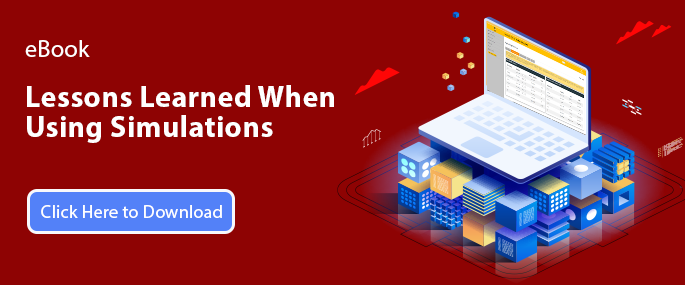The email waiting in my inbox on a lazy Sunday morning from one of my close friends from a partner  company made my entire weekend. “Thank you for having the courage to fight for what you believe in and not taking the easy way out by playing ‘not to lose’. I’m inspired by your desire to play to win and confidence that you can figure out the best solution.”
company made my entire weekend. “Thank you for having the courage to fight for what you believe in and not taking the easy way out by playing ‘not to lose’. I’m inspired by your desire to play to win and confidence that you can figure out the best solution.”
I replied to her that it’s the only way I think and that much of my mindset has been forged by what I do every day when I deploy our computer-based business simulations to our clients as part of our sophisticated business acumen learning journeys. A business acumen learning journey is a talent development program that integrates content with digital simulations that are case studies that come to life.
Simulations are great tools to teach leaders to play to win because you learn how to set a strategy and execute that strategy through people and operational decisions. More importantly, simulations build confidence to win because you are able to understand the levers and drivers of success.
For example, last week I was with one of our pharmaceutical industry clients teaching a group of R&D leaders how to successfully build a pipeline and then launch new products. One of the biggest “aha” moments for them was the alignment between market potential and investments in R&D. In the simulation, they were limited by an R&D budget that equated to 22.5% of revenues. The challenge was that they wanted to fund their pipeline for the future which would have required another $1.2 billion which they simply didn’t have. They then spent time analyzing the market sizes and market potentials of all of the drugs in the pipeline and were able to make the winning decisions based on their understanding of how may potential patients they could reach and what sort of financial coverage they could get from insurance companies and government support.
Another powerful component of the business simulation experience is the ability to conduct “what-if” analysis. Through forecasting tools, simulations present the opportunity to try different scenarios that drive different outcomes. What if we raise our price? What if we increase customer service? What if we increase our marketing budget? What if we reduce our raw material costs? Leaders developing their skills in simulations quickly learn what levers to pull and the “what-if” potential outcomes of their decisions. Over time, leaders can develop a confidence and a mindset for knowing what decisions are right, what decisions are wrong, and what decisions will help you win.
I was recently conducting a reunion webinar for a cohort of past participants who check in every quarter on how they are applying their new business acumen skills. This past week, one of them shared that they took one of the key learning from her simulation experience to make a bold decision that ended up being a winner. A brand leader for a consumer products company, shared that one of the lessons she learned in the simulation is to be consistent with the marketing investment and to support a robust sales enablement budget. Back in the “real world” she said that she increased her marketing budget and has patiently been building support for the sales tools. She was very pleased to let us know that the investment is paying off and that revenues are up and the sales team has been even more productive as a result of the initiatives. It was clear to us all that she could have played it not to lose, but the simulation experience taught her how to play to win.




